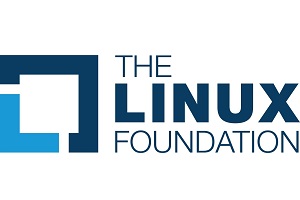DENT network operating system partners with OCP to integrate Switch Abstraction Interface

The Linux Foundation (LF), a non-profit technology consortium, announced the incorporation of the Open Compute Switch Abstraction Interface (SAI) into the open source DENT network operating system (NOS) project. This collaboration between the Linux Foundation and the Open Compute Project (OCP) aims at benefiting the entire open-source community by providing a unified and standardised approach to networking across hardware and software.
The DENT project, a Linux-based network operating system (NOS), has been designed to empower disaggregated networking solutions for enterprises and data centres. By incorporating OCP’s SAI, an open-source hardware abstraction layer (HAL) for network switches, DENT has taken a step forward in enabling support for a wide range of Ethernet switch ASICs, thereby expanding its compatibility and fostering greater solution in the networking space.
Why incorporate SAI into DENT
The decision to integrate SAI into the DENT NOS was driven by the need to widen standardised interfaces for programming network switch ASICs, enabling hardware vendors to develop and maintain their device drivers independently from the Linux kernel. SAI offers several advantages:
- Hardware abstraction: SAI provides a hardware-agnostic API, enabling developers to work on a consistent interface across different switch ASICs, thus reducing development time and effort.
- Vendor independence: By separating the switch ASIC drivers from the Linux kernel, SAI enables hardware vendors to maintain their drivers independently, ensuring timely updates and support for the latest hardware features.
- Ecosystem Support: SAI is backed by a thriving community of developers and vendors, ensuring continuous improvements and ongoing support for new features and hardware platforms.
Collaboration between the Linux Foundation and OCP
The collaboration between the Linux Foundation and OCP is a testament to the power of open-source collaboration for hardware software co-design. By combining efforts, the organisations aim to:
- Drive innovation: By integrating SAI into the DENT NOS, both organisations can leverage their respective strengths to foster innovation in the networking space.
- Expand compatibility: With the support of SAI, DENT can now cater to a broader range of network switch hardware, enhancing its adoption and utility.
- Strengthen open-source networking: By collaborating, the Linux Foundation and OCP can work together to develop open-source solutions that address real-world networking challenges, thus promoting the growth and sustainability of open-source networking.
The Linux Foundation and OCP are committed to empowering the open-source community by delivering technologies and fostering innovation.
Linux Foundation
“We are excited that network operating systems have evolved significantly from data centres to enterprise edge,” says Arpit Johipura, general manager, networking, edge and IoT, the Linux Foundation. “Harmonising at the lower layers provides alignment for the entire ecosystem across silicon, hardware, software and more. We’re eager to see what innovations arise from the extended collaboration.”
Open Compute Project
“Working closely with the Linux Foundation and the extended open ecosystem to integrate SAI across hardware and software is key to enabling faster and more efficient innovation,” says Bijan Nowroozi, chief technical officer (CTO) for the Open Compute Foundation. “Furthering our collaboration with the LF around the DENT NOS further enables industry-standardisation for more agile and scalable solutions.”
Delta Electronics
“This is an exciting development for the industry because enterprise edge customers using DENT now have access to the same platforms that are deployed on a large scale in data centres to gain cost savings,” says Charlie Wu, VP of data centre RBU, Delta Electronics. “Creating an open source community benefits the entire ecosystem of solutions for both providers and users, and Delta is proud to continue supporting DENT and SAI as we move towards a more collaborative market.”
Keysight
“The adoption of SAI by the DENT project benefits the entire ecosystem, expanding the options available to platform developers and system integrators,” says Venkat Pullela, chief of technology, networking at Keysight. “SAI strengthens DENT immediately with an existing and continually growing set of test cases, test frameworks and test equipment. Thanks to SAI, the validation of ASIC performance can be completed much earlier in the cycle before the full NOS stack is available. Keysight is happy to be a part of the DENT community and provide validation tools for new platform onboarding and system verification.”
Comment on this article below or via Twitter @IoTGN
